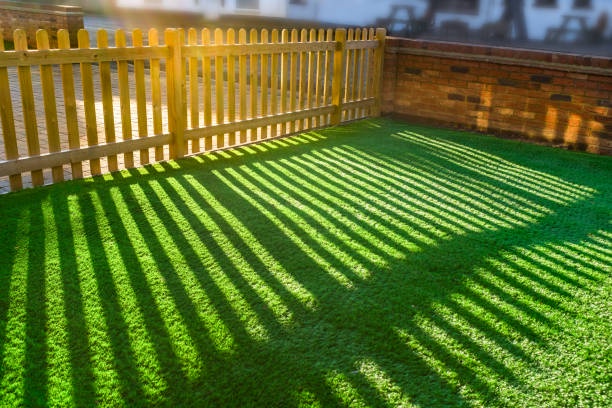Transforming your outdoor space with synthetic grass offers a host of benefits, from reduced maintenance to year-round greenery. However, ensuring proper drainage is essential to keep your synthetic lawn looking lush and vibrant. In this guide, we'll explore effective ways to enhance drainage in your synthetic grass lawn, ensuring it stays resilient against the elements.
- Choose the Right Base Material:
Begin by selecting a suitable base material for your synthetic grass installation. Opt for materials with excellent drainage properties, such as crushed stone or decomposed granite. This foundational layer sets the stage for efficient water permeation, preventing puddles and waterlogging.
- Utilize Permeable Geotextile Fabric:
Introducing a permeable geotextile fabric between the base material and synthetic grass provides an additional layer of drainage support. This fabric acts as a barrier, preventing the base from mingling with the soil while allowing water to pass through easily.
- Craft a Gentle Slope:
Designing your synthetic grass lawn with a subtle slope aids in natural water runoff. Ensure the slope directs water away from any structures, preventing potential pooling. This simple yet effective measure enhances drainage and safeguards your lawn against water-related issues.
- Incorporate Perforated Drain Pipes:
Strategic placement of perforated drain pipes in areas prone to water accumulation can significantly improve drainage. These pipes efficiently redirect excess water away from the surface, preventing saturation. Cover the pipes with a layer of gravel to prevent clogs and maintain optimal functionality.
- Regular Grooming for Fiber Health:
Routine grooming is crucial for maintaining the health and drainage efficiency of your synthetic grass lawn. Brush the fibers regularly to prevent matting, which can hinder water flow. This practice not only ensures proper drainage but also contributes to a lush and natural appearance.
- Opt for Aeration:
Introduce aeration into your lawn care routine to enhance water infiltration. A specialized aerating tool creates small holes in the turf, promoting better water penetration and root health. Aeration is a proactive measure to prevent compaction and maintain optimal drainage.
- Mindful Infill Application:
Choose an infill material with good permeability and apply it evenly across the synthetic grass lawn. Proper infill distribution maintains airflow within the turf, preventing compaction and facilitating efficient water drainage.
Conclusion:
With these practical steps, you can unlock the secret to a perfectly drained synthetic grass lawn. By paying attention to foundational elements, incorporating drainage-friendly features, and adopting regular maintenance practices, your synthetic lawn will not only thrive aesthetically but also withstand the test of time. Elevate your outdoor experience by ensuring that your synthetic grass remains vibrant, resilient, and impeccably drained.


No comments yet